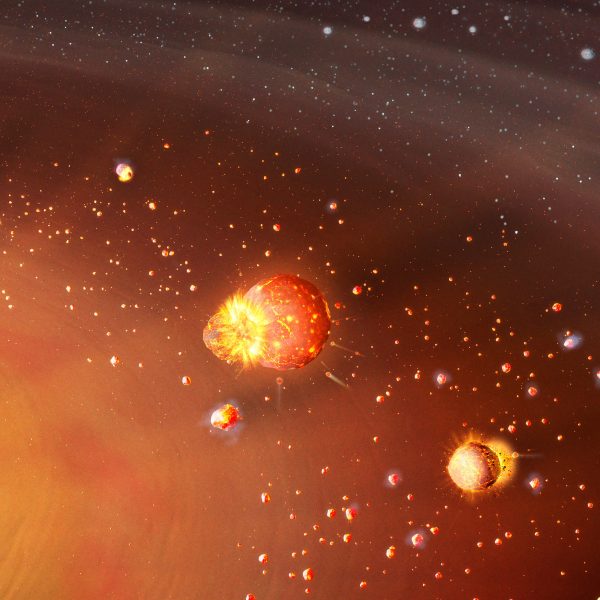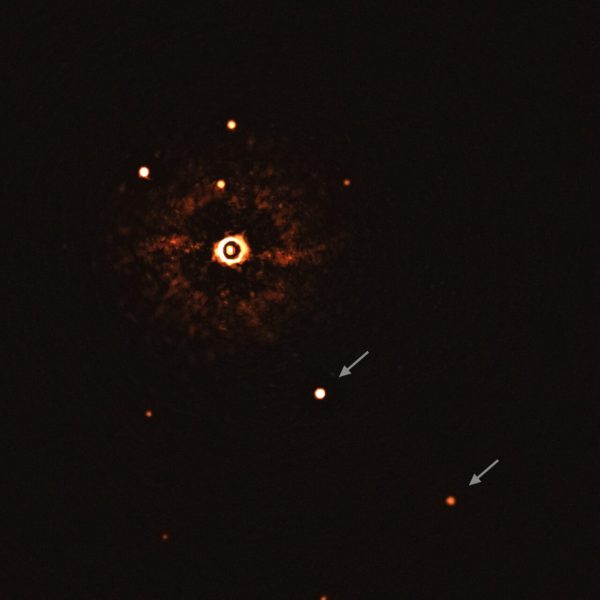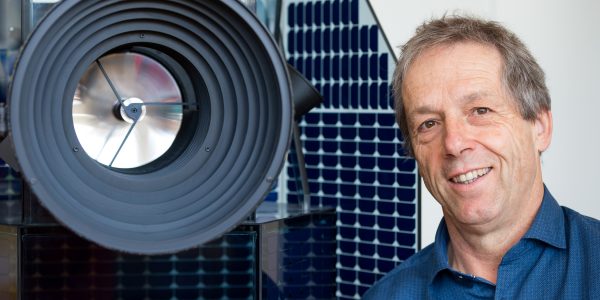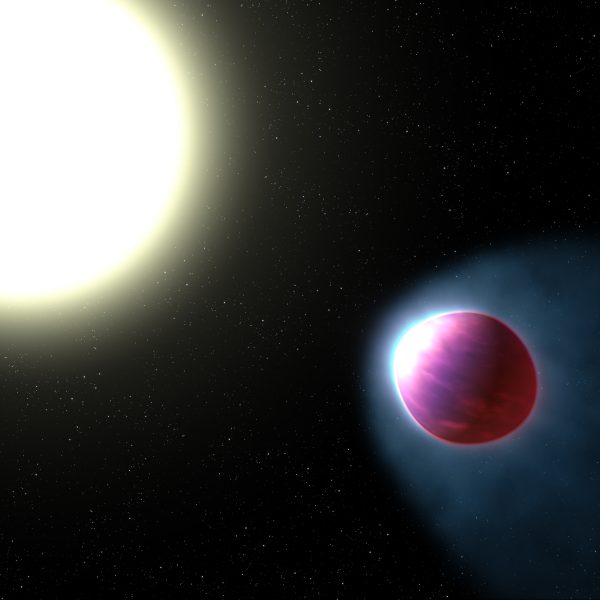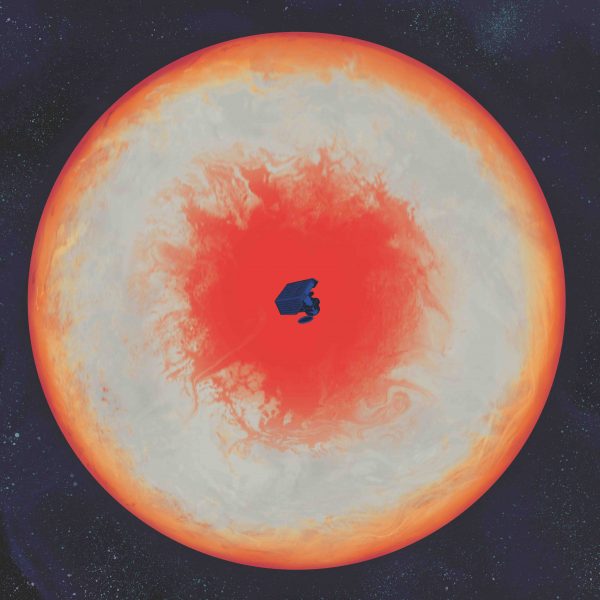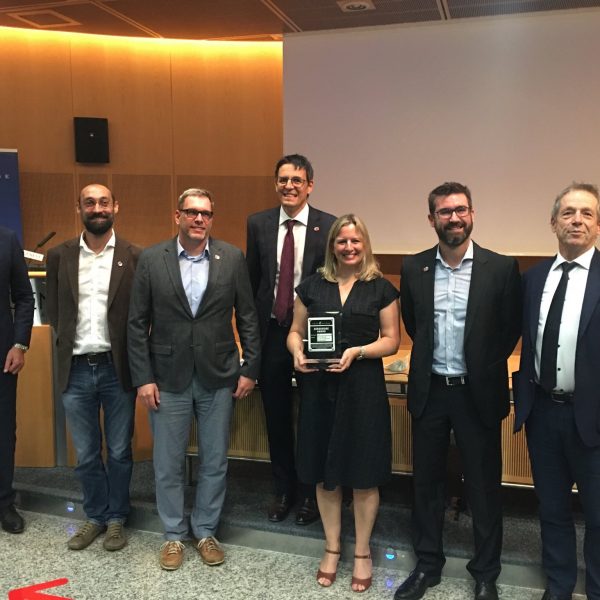External Newsletter
TRAPPIST-1’s 7 Rocky Planets May Be Made of Similar Stuff
The TRAPPIST-1 star is home to the largest batch of roughly Earth-size planets ever found outside our solar system. An international study involving researchers from the Universities of Bern, Geneva and Zurich now shows that the exoplanets have remarkably similar densities, which provides clues about their composition.
Continue ReadingHow our planets were formed
Terrestrial planets versus gas and ice giants: A new theory explaining why the inner solar system is so different to the outer regions runs counter to the prevailing wisdom. The theory was proposed by an international research group with ETH Zurich participation. Mercury, Venus, Earth and Mars in the inner solar system are relatively small, […]
Continue ReadingFirst picture of a planetary system around a Sun-like star
Out of the 4300 exoplanets that have been detected to date, only a few dozen have been detected thanks to direct imaging, i.e. we have been able to physically see a planet around its star in an image. Indeed the star is so bright compared to the planets that it is necessary to use indirect […]
Continue ReadingResearch and innovation know no borders
International cooperation is of the utmost importance to the University of Bern, principal Christian Leumann emphasised during the visit of a high-ranking German delegation on 1 September as part of an information trip at the invitation of Präsenz Schweiz. The University of Berne used a number of current examples to show that top-level research today is […]
Continue ReadingEditorial
Dear Reader, This is it! For the astronomers involved for many years in the design and building of CHEOPS the real excitement begins. The first scientific results obtained from the data collected by CHEOPS have just been published! Following one of the most extreme exoplanet known (WASP-189b is its name), CHEOPS could detect not only […]
Continue Reading“Switzerland is a space nation”
This week, the new COSPAR report is published, providing an overview of Swiss activities in the field of space. Renato Krpoun, head of the Swiss Space Office of the State Secretariat for Education, Research and Innovation SERI, comments on the report and emphasizes the importance of cooperation between science and industry. NCCR PlanetS: Mr. Krpoun, […]
Continue ReadingVaporised metal in the air of an exoplanet
An international team of researchers led by the National Centre of Competence in Research PlanetS of the University of Bern and the University of Geneva studied the atmosphere of the ultra-hot exoplanet WASP-121b. In it, they found a number of gaseous metals. The results are a next step in the search for potentially habitable worlds. […]
Continue ReadingFirst study with CHEOPS data describes one of the most extreme planets in the universe
CHEOPS keeps its promise: Observations with the space telescope reveal details of the exoplanet WASP-189b – one of the most extreme planets known. CHEOPS is a joint mission by the European Space Agency (ESA) and Switzerland, under the aegis of the University of Bern in collaboration with the University of Geneva. Eight months after the […]
Continue ReadingAerosuisse Award for the CHEOPS team
The Aerosuisse 2020 Award was presented to the CHEOPS satellite team at the Aerosuisse Annual General Meeting held at Geneva Airport on September 11 to mark its 100th anniversary. The award recognizes the success of the first CHEOPS mission carried out in partnership between the European Space Agency (ESA) and Switzerland. Under the direction of […]
Continue ReadingEditorial
As measures are taken to slowly return to normal life, the amount of damage caused by the Covid-19 on people’s life and economy is starting to show. Help is needed everywhere and is being provided as best as possible by the authorities, but anxiety remains as to how tomorrow will be. This uncertainty about […]
Continue Reading

